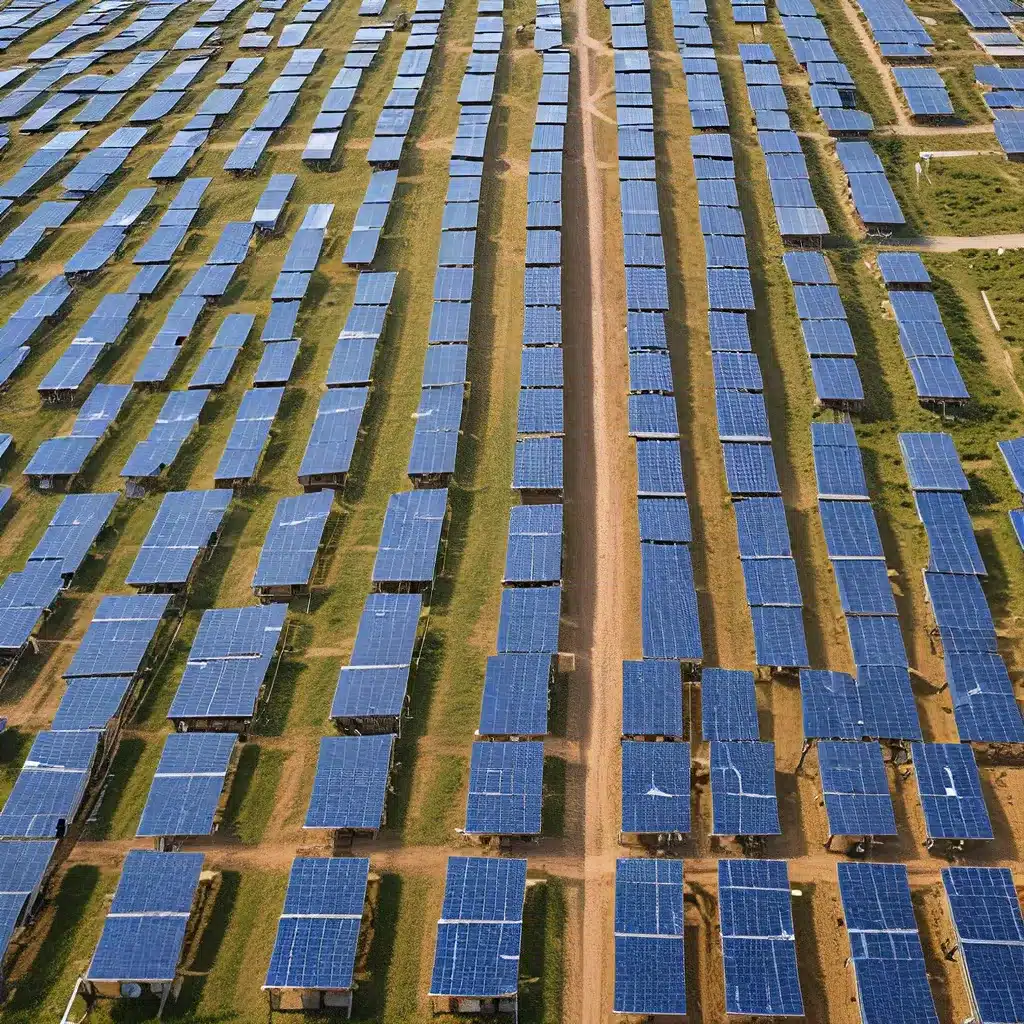
Reviving the Grid Through Renewable Energy Microgrids
Not too long ago, the idea of a fully renewable, decentralized grid seemed like a distant dream. But NREL and Siemens are working hard to make that dream a reality. Through their DOE-funded project AURORA, they’re demonstrating how we can build resilient microgrids powered solely by renewable energy and inverter technology.
Now, I know what you’re thinking – how can a bunch of small, local power sources possibly replace the massive, centralized grid we’ve all grown accustomed to? Well, let me tell you, the future of energy is a lot more distributed and dynamic than you might expect.
The Rise of the Microgrid
The centralized grid as we know it has served us well for a long time, but it’s also got its fair share of weaknesses. When a major outage strikes, like the one that hit Puerto Rico in 2017, we’re often left waiting helplessly for the utility crews to restore power across a wide area. But what if, instead of relying on those long transmission lines, we had a network of resilient microgrids that could recover on their own?
That’s exactly the kind of future the AURORA project is working towards. By using advanced inverter technology and clever control strategies, these microgrids can form their own mini-grids and keep the lights on, even when the main grid goes down. And the best part? They can do it all with 100% renewable energy.
Inverters: The New Grid Maestros
At the heart of this microgrid revolution are power inverters – the electronic devices that connect renewable energy sources like solar and wind to the electrical grid. In the past, these inverters were little more than passive participants, relying on the larger grid to maintain stability. But now, thanks to some innovative software-defined controls, they’re taking on a much more active role.
The AURORA team has developed a suite of decentralized control algorithms that allow these inverters to work together and form self-sustaining grids. They can synchronize their frequencies, balance supply and demand, and even coordinate the process of black start – that is, getting the system back up and running from a total shutdown. It’s like a symphony of renewable energy, with the inverters as the conductors.
And the best part? This newfound flexibility and configurability of the inverters means that these microgrids can scale up or down as needed, dynamically reorganizing their connections to match the situation at hand. Want to isolate a particular community during an outage? No problem. Need to reconnect with the larger grid after repairs are made? Easy peasy.
A Resilient, Renewable Future
The work being done through AURORA and the broader UNIFI consortium is a game-changer for the future of the grid. By demonstrating the potential of grid-forming inverters and renewable microgrids, they’re paving the way for a more resilient, sustainable, and decentralized power system.
Imagine a future where your neighborhood or town has its own microgrid, powered by a mix of solar, wind, and energy storage. When the main grid goes down, your little slice of the energy world can keep chugging along, providing you with the power you need. And when the grid is back up and running, your microgrid can seamlessly reconnect, contributing its renewable energy to the larger network.
It’s a vision that’s already taking shape in places like the Netherlands, where microgrid communities are supplying up to 90% of their own energy needs. And with the work being done by NREL, Siemens, and others, I have a feeling we’ll be seeing a lot more of these resilient, renewable microgrids popping up in the years to come.
Overcoming the Challenges
Of course, transitioning to this new, decentralized grid model isn’t without its challenges. The AURORA project is shedding light on a few key issues, like synchronizing the inverters, balancing communication-based and communication-less controls, and configuring protection systems to keep these microgrids safe and secure.
But I’m confident that the brilliant minds at NREL, Siemens, and the UNIFI consortium are up to the task. They’re collaborating across industry and research groups to tackle these shared electrical grid challenges, setting the stage for a future where renewable energy is the foundation of a resilient, reliable, and clean power system.
Powering the Future, One Microgrid at a Time
As I write this, the AURORA project is nearing completion, and the team is eagerly awaiting the results. What will they discover about the capabilities of 100% renewable microgrids? How can this technology be scaled up and deployed across the country (or even the world)? These are the questions that are keeping the energy industry buzzing with excitement.
And you know what? I can’t wait to see what they find. Because if there’s one thing I’m sure of, it’s that the future of our electrical grid is going to be a lot more decentralized and renewable than we ever thought possible. So keep your eyes peeled, folks – the microgrid revolution is just getting started.
Firewinder is at the forefront of this renewable energy revolution, providing cutting-edge solutions to power the grid of tomorrow. Check out their website to learn more about how they’re helping to shape the future of energy.

